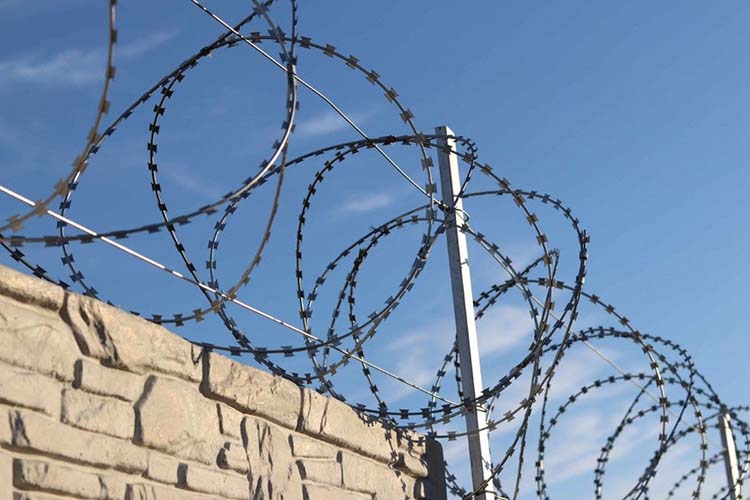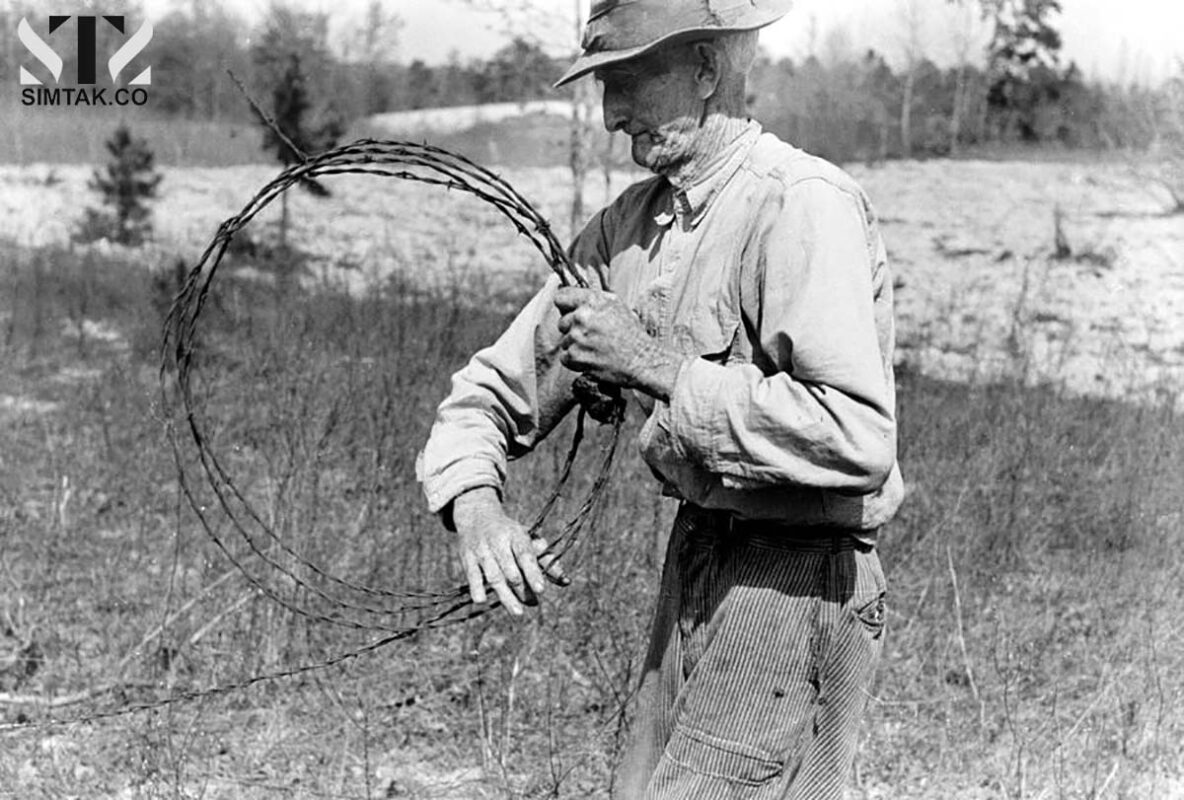We aim to present you with the history and development of barbed wire in this essay. We shall first define barbed wire and discuss its applications before detailing the history of its creation.
Barbed wire definition
The two metal wires that make up barbed wire are typically interwoven; at regular intervals, highly sharp, pointed wires are wrapped around them. These wires are specific metal fencing wires punctuated along their length by sharp edges. This product is made of galvanized wire, and installing it calls for both a fence foundation and a fence net. Even amateurs may easily install these wires.
Barbed wire is used to reinforce defensive barriers in conflicts so that it wounds and kills humans or animals who try to cross it while also providing security and safety.


( Products of Sim Tak: Gabion Wire Mesh | Hexagonal Wire Mesh | Galvanized wire )
Before the advent of barbed wire
Leonce Egan, a Frenchman, initially proposed fencing in 1860, consisting of thin flat wire. His plan incorporated a fancy with pointed edges that were challenging to pass through. Louis-François Jeanin presented a double wire with metal tips and diamond-shaped teeth in April 1865, and he was given a patent for it. Michael Kelly, an American man, was the first to advocate using fencing particularly to keep animals away.
Only six barbed wire patents—two of which pertained to animal deterrents—had been issued by 1867 after more patents had been granted. Due to this circumstance, there are now many different varieties of barbed wire. Herders utilized barbed wire to fence off the property as a deterrent to farmers and other ranchers in its early applications. Additionally, it was utilized on railroads to prevent cattle from damaging crops.
The invention of barbed wire
Barbed wire was first employed for the war’s borders, but when it was over, fans of the product grew, and it was widely utilized in the battles between Russia and Japan as well as for maintaining and protecting military camps. Egan, a Frenchman, invented the use of flat, thin wire for fencing in 1960. It was extremely challenging to pass this thin fence due to its numerous sharp points.
Similar concepts were developed after Louis Franco received a patent in 1965 for his design, which featured a double wire with prongs and metal-shaped tips. For instance, this product was used as an alternative to fencing to stop animals like cows because it was less expensive than building fences out of wood, stone, or cement. Barbed wire was less expensive than other options and it was much simpler to install.


( Products of Sim Tak: Fence netting | Reinforcement wire )
Patented barbed wire (the first barbed wire)
Barbed wire was initially employed to demarcate the war’s boundaries in Portugal in 1895. Barbed wire was utilized in the 1904 battles between Japan and Russia, which saw a growth in the number of fans of this product after the war. Following that, barbed wire was employed extensively for the security and upkeep of military camps during the First World War. In addition, barbed wire served another purpose during the conflict when it was incorporated into the walls of military headquarters, labour camps, and detention facilities.
Two American inventors called Lucien B. Smith and Kenneth Ohio received patents for barbed wire. One benefit of barbed wire is that it is entirely galvanized, resistant to sunshine, dampness, rain, and moisture, maintains its white colour, and its texture is unaffected. Barbed wire first appeared in the 19th century. When compared to other items, it made fencing with these products easier to complete, easier to install, and also resulted in cost savings.
The prevalence of barbed wire use
As the demand for sturdy fences and barbed wire increased, more sophisticated and effective techniques for producing various types of flexible and robust barbed wire were developed. The producers of this product started making high-tension wires they dubbed elastic wires around 1980. To boost the wire’s flexibility without compromising the barbed wire’s strength, carbon fibre was mixed with pure steel. The wire was then heat treated in the following stage to improve the carbon density. This process produced barbed wire that was half as heavy and had greater strength and elasticity than the prior version. Barbed wire became less expensive as a result of weight reduction.
Manufacturers of barbed wire decided to use galvanized steel in the early 2000s to boost the wire’s resistance to rust and corrosion. This technique involved coating the steel wire made in the plant with an alloy of zinc and aluminium. The items made in this method are said to last up to 50 years, while wires in the previous technique would only survive fewer than 10 years.


( Products of Sim Tak: Chicken wire | Concertina wire )
Last words
Afra Sim Tak Sadid creates high-quality barbed wire that is suitable for your purposes and offers it to you at the lowest market price utilizing the most up-to-date and equipped procedures and tools. For a free consultation and to purchase any kind of barbed wire, including linear and ring barbed wire as well as the mesh and wire types you require, get in touch with our experienced specialists.
Recent posts:
Garden fencing with Fence netting
Which One Is Better: False Ceiling or Expanded Metal?




